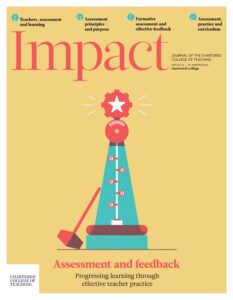Feedback literacy: The building blocks for effective feedback in schools
Written by: Ngozi Oguledo

10 min read
Ngozi Oguledo, Lead Practitioner, Ortu Gable Hall School, UK
Assessment is the planned or unplanned process involving the review of learning and the utilisation of the outcome for varied purposes. Identifying and closing learning gaps is one of the rationales for assessment. Feedback serves as a bridge, as it plays a crucial role in communicating the gaps and the gap-filling mechanisms. As Race (2014, p. 97) maintains, if ‘assessment is the engine that drives learning, then feedback is the oil that lubricates the cogs of understanding’. Hence, there is a place for feedback in teaching and learning. Variations exist in the understanding of feedback, ultimately resulting in varied feedback models in schools. I will draw on evidence and experience to discuss the characteristics of effective feedback, review the different feedback models in schools and highlighting the implications for teachers and students.
What is feedback?
Feedback in schools is generally viewed as the informatio
Join us or sign in now to view the rest of this page
You're viewing this site as a guest, which only allows you to view a limited amount of content.
To view this page and get access to all our resources, join the Chartered College of Teaching (it's free for trainee teachers and half price for ECTs) or log in if you're already a member.
0
0
votes
Please Rate this content
Subscribe
Please login to comment
0 Comments
Oldest
Newest
Most Voted
Inline Feedbacks
View all comments










